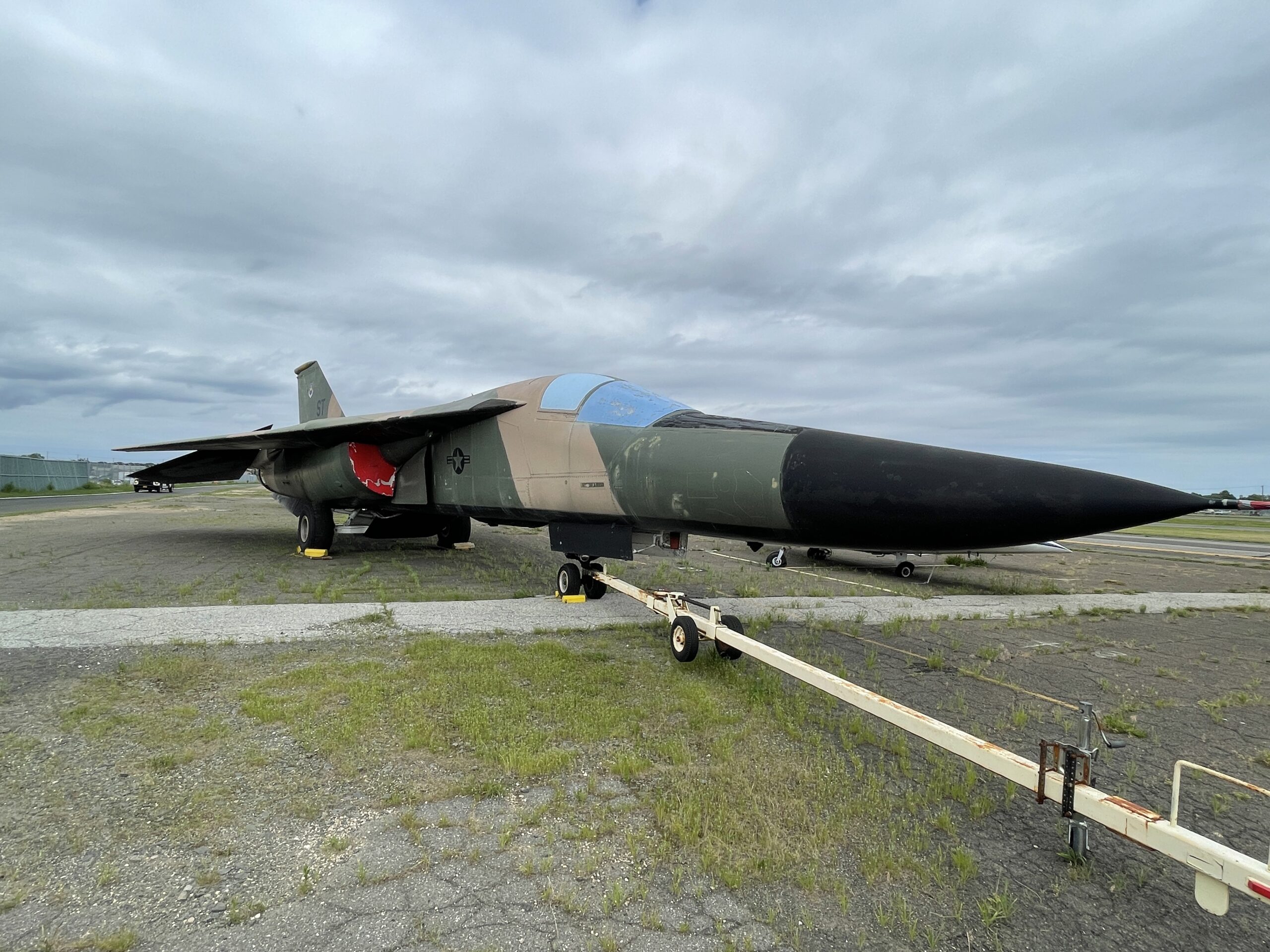Aircraft:
General Dynamics F-111A “Ardvark”
Current Status:
Static
History:
The General Dynamics F-111 “Aardvark” was a medium-range interdictor and tactical strike aircraft that also filled the roles of strategic bomber, reconnaissance, and electronic countermeasures. Developed in the 1960s by General Dynamics, it first entered service in 1967 with the United States Air Force with the F-111A. The Royal Australian Air Force (RAAF) also ordered the type and began operating F-111Cs in 1973.
The F-111 pioneered several technologies for production aircraft, including variable-sweep wings, afterburning turbofan engines, and automated terrain-following radar for low-level, high-speed flight. Its design influenced later variable-sweep wing aircraft, and some of its advanced features have since become commonplace. During its initial development the F-111 suffered a variety of problems, and several of its intended roles, such as naval interception, with the F-111B, failed to materialize.
On 14 April 1986, 18 F-111s and approximately 25 Navy aircraft conducted air strikes against Libya under Operation El Dorado Canyon in response to the downing of Pan Am flight 800. The 18 F-111s of the 48th Tactical Fighter Wing and the 20th Tactical Fighter Wing flew what turned out to be the longest fighter combat mission in history. The round-trip flight between RAF Lakenheath/RAF Upper Heyford, United Kingdom and Libya of 6,400 miles spanned 13 hours. One F-111 was lost over Libya, probably shot down.
F-111s participated in Gulf War (Operation Desert Storm) in 1991. During Desert Storm F-111Fs completed 3.2 successful strike missions for every unsuccessful one, making it the leading strike aircraft. The group of 66 F-111Fs dropped almost 80% of the war’s laser guided bombs, including the GBU-15 and the penetrating, bunker-buster GBU-28. Eighteen F-111Es were also deployed during the operation. The F-111s were credited with destroying more than 1,500 Iraqi tanks and armored vehicles. Their use in the anti-armor role was dubbed “tank-plinking“.
The F-111 was in service with the USAF from 1967 through 1998. The Strategic Air Command had FB-111s in service from 1969 through 1990. At a ceremony marking the F-111’s USAF retirement, on 27 July 1996, it was officially named Aardvark, its long-standing unofficial name. The USAF retired the EF-111 variant in 1998. The RAAF was the last operator of the F-111, with its aircraft serving until December 2010
About Our General Dynamics F-111A “Ardvark”:
The American Airpower Museum General Dynamics F-111A is currently on loan from the National Museum of the United States Air Force.


